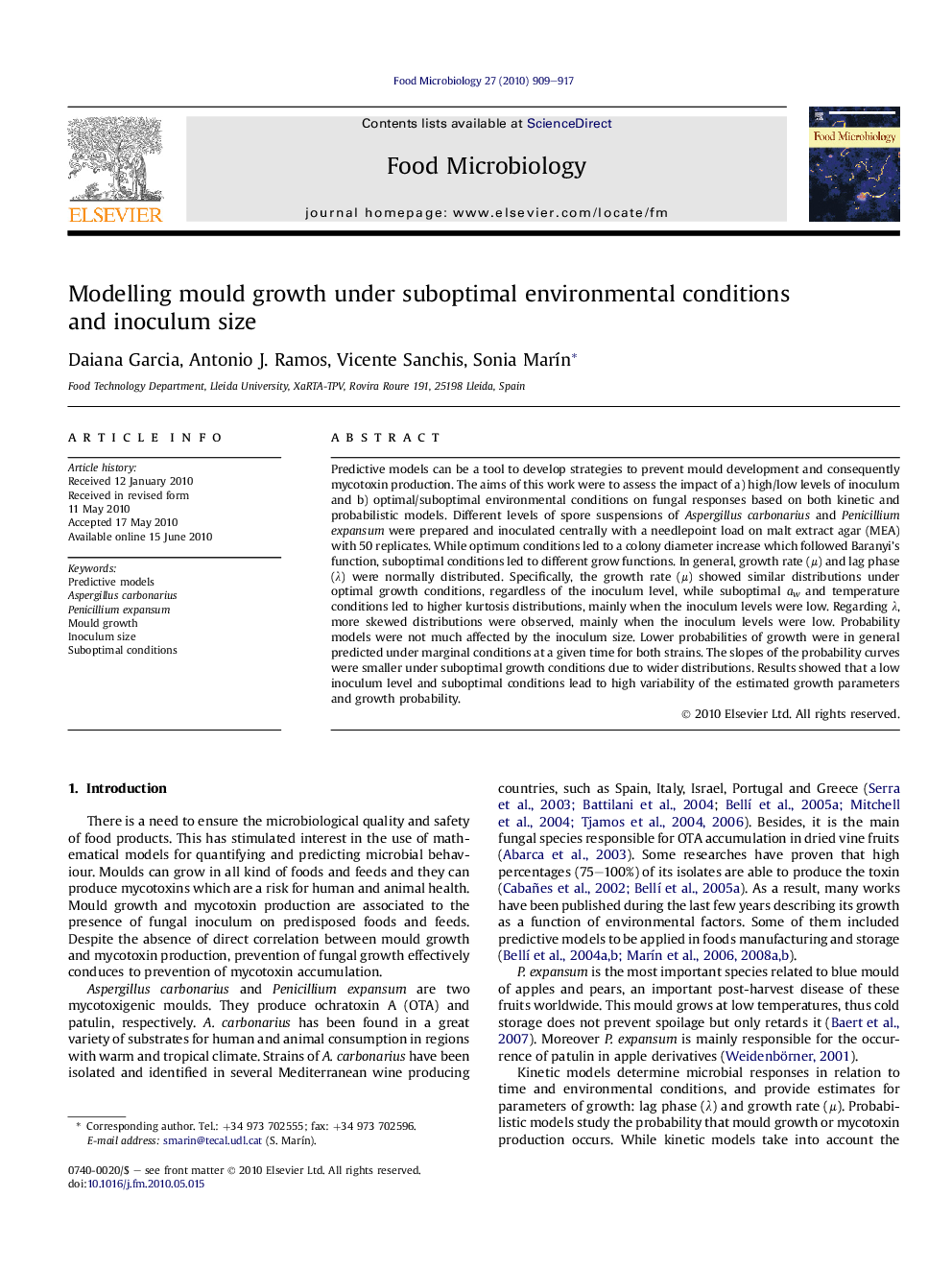| Article ID | Journal | Published Year | Pages | File Type |
|---|---|---|---|---|
| 4363368 | Food Microbiology | 2010 | 9 Pages |
Predictive models can be a tool to develop strategies to prevent mould development and consequently mycotoxin production. The aims of this work were to assess the impact of a) high/low levels of inoculum and b) optimal/suboptimal environmental conditions on fungal responses based on both kinetic and probabilistic models. Different levels of spore suspensions of Aspergillus carbonarius and Penicillium expansum were prepared and inoculated centrally with a needlepoint load on malt extract agar (MEA) with 50 replicates. While optimum conditions led to a colony diameter increase which followed Baranyi’s function, suboptimal conditions led to different grow functions. In general, growth rate (μ) and lag phase (λ) were normally distributed. Specifically, the growth rate (μ) showed similar distributions under optimal growth conditions, regardless of the inoculum level, while suboptimal aw and temperature conditions led to higher kurtosis distributions, mainly when the inoculum levels were low. Regarding λ, more skewed distributions were observed, mainly when the inoculum levels were low. Probability models were not much affected by the inoculum size. Lower probabilities of growth were in general predicted under marginal conditions at a given time for both strains. The slopes of the probability curves were smaller under suboptimal growth conditions due to wider distributions. Results showed that a low inoculum level and suboptimal conditions lead to high variability of the estimated growth parameters and growth probability.
